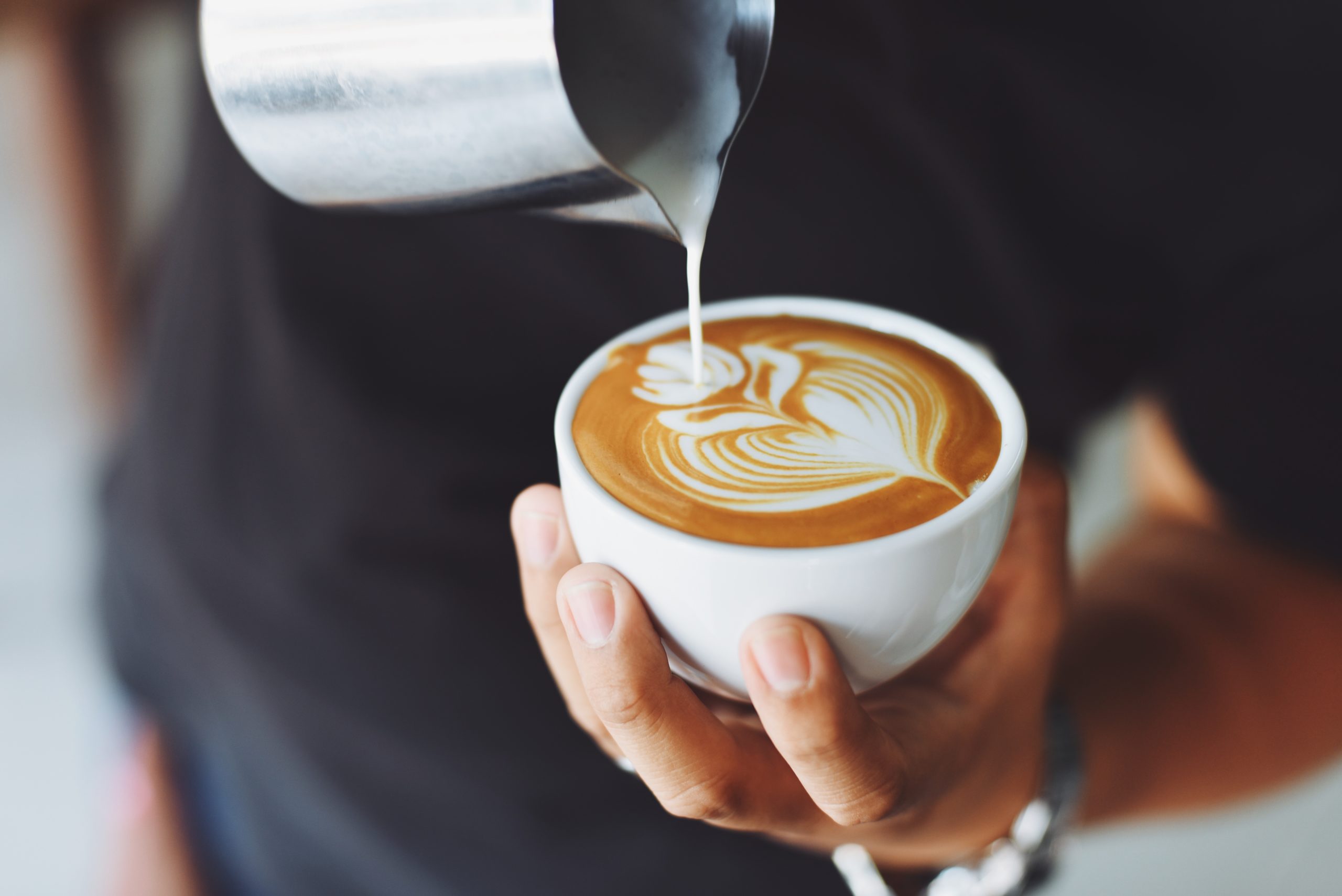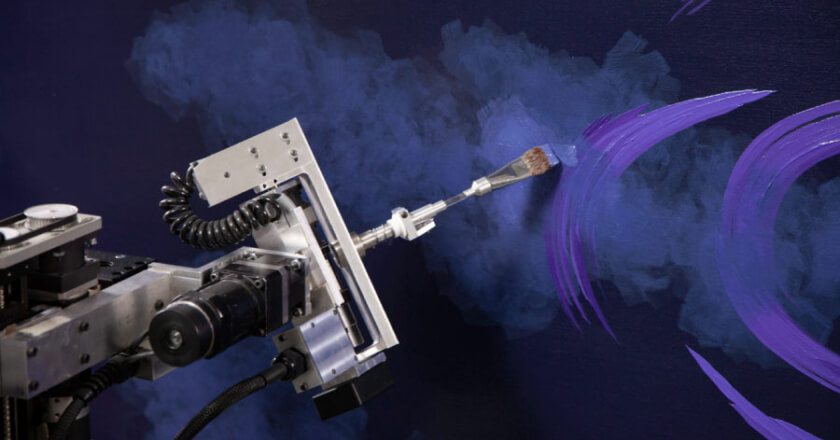Get Inspired
Build the life you love. Learn more about fusioneering:

Posted on December 28, 2021 in Art History
Artistic inspiration can be found anywhere — sometimes in something as simple as cream moving in a cup of coffee. Such was the case with Cappuccino Fluid Dynamic, one of Paul Kirby and Dulcinea the robot’s largest canvas paintings (64” x 86”) to date.
On a day like any other, during a morning visit to his favorite local coffee shop, Paul Kirby found himself fascinated with the abundance of “swirling energy and motion” in the foam of his cappuccino.
The hypnotic motions Paul observed in his cup were the product of a branch of physics known as “fluid mechanics” – the series of physical laws that govern the movements of all fluids (be they liquid, gas, or plasma). “Fluid dynamics,” is a subdiscipline of fluid mechanics that focuses specifically on the flow of fluids – such as the differently dense cream and coffee commingling and dancing together in a ceramic mug. What if one wanted to simulate similar movements through a body of liquid? Well, they’d need to employ an additional discipline known as “computational fluid dynamics,” a form of fluid mechanics that utilizes computer-based analysis and data structures to break-down, recreate, and solve problems involving the movement of fluids.
Paul knew the best way to do artistic justice to the kinetic complexity of moving liquids – and thereby recreating in others the same fascination he felt in the coffee shop – would be through computer simulation. Paul employed computational fluid dynamics to simulate different artificial flow rates and their points of collision, creating results that mimicked the movements in a fresh cappuccino. With these AI-produced simulations up-and-running, Paul cycled through a variety of different fluid renderings and landed on the version that produced what he felt was the greatest sense of awe and wonder. This “living” simulation would be the blueprint from which Dulcinea would transform complex mathematics into two-dimensional art.
The easiest part of the process in creating Cappuccino? The brushstroke map for Dulcinea needed no additional work, seeing as every brushstroke to be made by Dulcinea’s robotic hand had already been produced organically by Paul’s fluid dynamics simulator — and paint is, after all, a fluid. Dulcinea was ready to turn the idea from one man into a breathtaking work of art. The only help she required in her task was sectional moving of the canvas to accommodate her workspace; the painting had to be produced by Dulcinea one quarter at a time, due to the piece’s substantial size. A whopping 2,956 brushstrokes later, and the diligent robot painter was finally ready to rest and lay down her tools.
The result of Paul and Dulcinea’s efforts? A striking work exploring the idea of deterministic chaos — through science and mathematics we are endlessly capable of simulating the natural processes in the world around us, but due to the great myriad of variables and components at play, each reproduced instance, each kinetic ballet of energy, is as complex and unique as a snowflake. Cappuccino represents not order out of chaos, but rather chaos presented in appreciation for its own inherent beauty. A beauty as exciting and unpredictable as life itself.
Dying to know what Dulcinea will be painting next? Join our mailing list to track every exciting development at the Kirby Foundation!
Are you interested in hearing the complete story of Paul and Dulcinea? Watch the video (nominated for Best Short Film at the 2021 Vail and Portland Film Festivals) for more info.
Want to be the first to know about every exciting new project at the Kirby Foundation?
Join Our Mailing ListBuild the life you love. Learn more about fusioneering:
Why pick which passion you should follow? Fusioneering allows you to cultivate many interests into something innovative and revolutionary.

Meet Paul and explore how blending your interests can empower you to follow your enthusiasm and bring your passions to life.